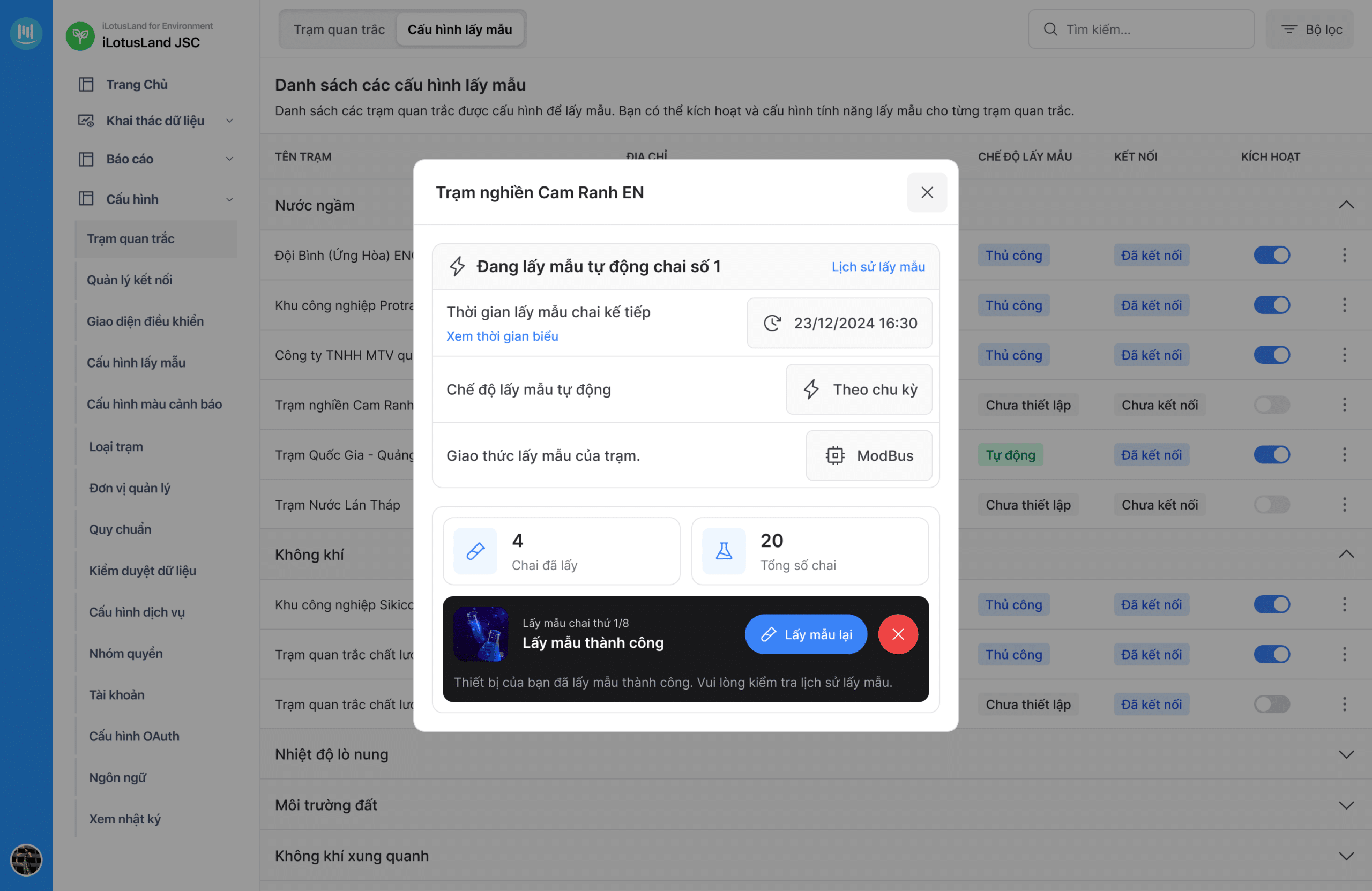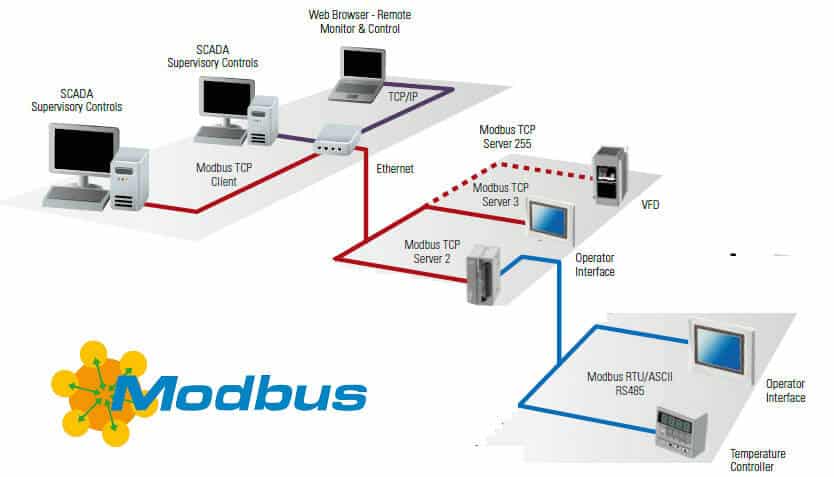In the current context of industrialization and modernization, communication between industrial devices plays a crucial role in ensuring efficient and stable system operations. One of the widely used and reliable communication protocols in this field is Modbus. Developed in 1979 by Modicon, Modbus has become an open and free standard, renowned for its simplicity, reliability, and high compatibility. This article provides an overview of Modbus, from its operating principles to practical applications, particularly in environmental management and monitoring.
What is Modbus?
Modbus is an open, free communication protocol widely used to connect industrial devices such as PLCs, controllers, sensors, and actuators. It was developed in 1979 by Modicon (now Schneider Electric) and is highly regarded for its simplicity, reliability, and high compatibility.
How Modbus Works
Modbus operates on a "Master-Slave" or "Client-Server" principle. A Modbus network functions on a client/server model where a master device communicates with one or more slave devices. The master, usually a PLC, PC, DCS, RTU, or SCADA, sends requests to the slave devices, which are typically field-level devices. Simply put, it is a method used to transmit information over serial lines between electronic devices. The master sends a request to the slave, and the slave responds with the requested data.
In a standard Modbus network, there is one master and up to 247 slaves, each with a unique address from 1 to 247. The master can also write information to the slaves. This protocol uses concise and understandable data frames, minimizing communication costs and increasing operational efficiency.
Key Technical Features of Modbus
- Connects up to 247 devices in a network.
- Network range up to 1 km.
- Supports broadcast messaging.
- Standard cabling system.
Common Types of Modbus
- Modbus RTU (Remote Terminal Unit): Uses serial connection RS-485 for data transmission. This version is commonly used in industrial environments due to its reliability and high resistance to interference.
- Modbus TCP (Transmission Control Protocol/Internet Protocol): Uses Ethernet networks for data transmission. This version offers high transmission speeds and the ability to connect more devices.
- Modbus ASCII: Encodes data in hexadecimal format using ASCII characters. This version is less commonly used due to slower transmission speeds compared to RTU and TCP.
Modbus is widely used in various industrial applications, including:
- Building Automation Systems (BAS): Controls heating, ventilation, and air conditioning (HVAC) systems, lighting, and security.
- Industrial Process Management: Monitors and controls production processes in industries such as chemicals, oil and gas, and food.
- Smart Grids: Connects grid devices to improve efficiency and reliability.
- Renewable Energy: Collects data from wind turbines, solar panels, and other renewable energy sources.

Application of Modbus in Environmental Monitoring Data Transmission
Currently, the online automatic environmental monitoring system implemented by the Binh Duong Department of Natural Resources and Environment has proven to be highly effective in controlling the quality of discharged water in the province. This system helps automatically manage and monitor nearly 110 wastewater sources from factories and industrial zones, increasing the quality control rate of wastewater to 90%.

One of the technologies effectively applied in this system is Modbus, a popular data communication protocol in industrial automation systems.
- Automated Sampling Scheduling and Process Automation:
- The iLotusLand software supports automated sampling scheduling, fully automating this process without human intervention.
- Automatic Sampling Protocols OPC and Modbus:
- iLotusLand supports two main protocols: OPC and Modbus. Among them, Modbus is a reliable and easy-to-deploy communication protocol, widely used in monitoring and industrial control systems.
- Time, Cost, and Resource Savings:
- Automating the sampling process and using the Modbus protocol significantly save time and costs related to sampling and wastewater quality monitoring.
- Fast and Accurate Sampling:
- The Modbus protocol ensures fast and accurate data transmission, ensuring timely sampling and analysis of wastewater, meeting quality control requirements.
- Sampling Process Monitoring:
- The system allows real-time monitoring of the sampling process, providing continuous updates on the status and quality of wastewater samples.
- Easy Configuration Adjustments:
- The iLotusLand software allows easy adjustments to the sampling configuration as needed, ensuring flexibility and suitability for actual conditions.
- Efficient Data Management:
- All observation data is effectively managed, facilitating easy retrieval, analysis, and reporting when needed.
"iLotusLand software helps businesses manage and monitor environmental observation data in real-time effectively. With over 9 years of experience, it leads the market in Vietnam in the field of environmental data management and monitoring through IoT technology."
The application of the Modbus protocol in environmental observation data transmission has brought numerous practical benefits for the management and monitoring of wastewater quality in Binh Duong. The online automatic environmental monitoring system with iLotusLand software not only saves time and costs but also enhances environmental management efficiency, contributing to community health protection and sustainable development.
Conclusion
Modbus is a powerful and flexible communication protocol widely used in many industrial applications. Its advantages include being free, simple, reliable, and highly compatible. However, it is also important to note some limitations of Modbus, such as security, data transmission speed, and the limit on the number of devices.






